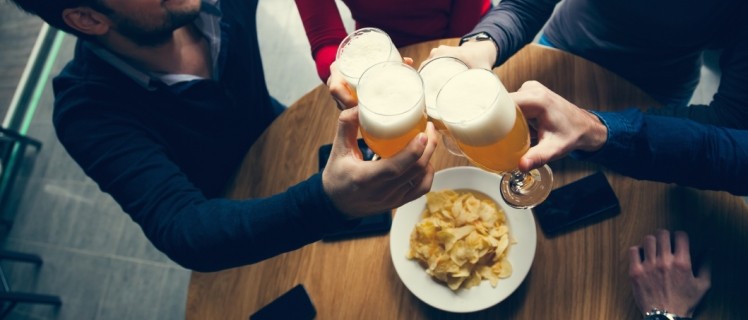Bank holiday beers: Why alcohol consumption data doesn't match sales figures

Survey data does not usually sufficiently cover alcohol drunk on special occasions, according to a study in BMC Medicine and funded by Alcohol Research UK, with existing survey data explaining only 60% of UK alcohol sales; just a third of US sales, and 80% of Australian sales.
Researchers in the UK carried out a new survey method, which sought to account for both typical drinking occasions and alcohol consumed during events such as Christmas, New Year, the summer months, holidays, bank holidays, bereavements, birthdays, weddings, hen/stag parties, sports events, and festivals.
Bank holiday and a beer
Findings showed that accounting for atypical or special occasion drinking added more than 120m UK units of alcohol a week to population alcohol consumption in England (around 12m bottles of wine).
Among 25-34 year olds, these occasions added around 18 units a week.
“Festive drinking, often as a counterpoint to the norms of daily sobriety, has a long history in many societies,” wrote Mark Bellis, lead author, in the study.
“Recent marketing techniques have capitalised on established drinking occasions (such as New Year) and actively encouraged greater associations between alcohol consumption and major sporting events, established holidays, and practically any personal occasion for celebration,” he added.
“With so many heavily promoted special drinking occasions, measuring individuals’ typical drinking is increasingly likely to omit major elements of their consumption patterns. For England, we have shown that including survey questions on atypical and special occasion consumption increases estimates of average weekly drinking by nearly a quarter (13.6 to 17.1 units/person/week).”
Alcohol and health
The relationship between alcohol and alcohol-related harm may need further attention in light of these figures, the authors warned, along with accurate measures of alcohol consumption to assess health harms caused by alcohol.
“The additional units associated with atypical and special occasion drinking can be disproportionately damaging to health,” said Bellis. “Thus, atypical and special occasion drinking is often associated with bingeing and, therefore, with increased risks of unintentional injury and violence as well as overdose and alcohol poisoning.
“Better population measures of celebratory, festival, and holiday drinking are required to measure the full extent of harms caused by alcohol and to ensure that such harms are not discounted or even dismissed by the public.”
Missing units?
The authors acknowledge that, even with special occasions taken into account, the amount of units consumers report drinking still does not meet that of alcohol sales. Possible explanations are that some groups of consumers cannot be reached by telephone surveys, or that alcohol is thrown away.
“What remains likely [however] is that individuals continue to underestimate how much they consume, especially through home-poured spirits and wine, and may also fail to report some drinking occasions either accurately or at all,” said Bellis.
Source: BMC Medicine (2015), 13.113. DOI 10.1186/s12916-015-0337-0
Title: ‘Holidays, celebrations, and commiserations: measuring drinking during feasting and fasting to improve national and individual estimates of alcohol consumption’
Authors: M.A. Bellis, K. Hughes , L. Jones , M. Morleo , J. Nicholls, E. McCoy, J. Webster and H. Sumnall.














